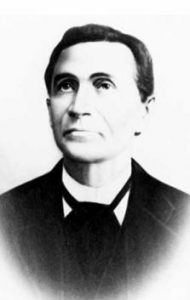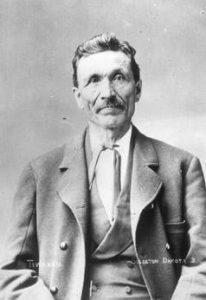 The other day, while reading an article about notable Native Americans, I came across a name that was familiar to me, but really didn’t seem like a Native American name. The name was Renville, the same name as my grand-nephew, James Renville. Immediately, I wondered if there might be a connection between Chief Gabriel Renville and my grand-nephew. The search didn’t take very long, before I had my answer. Gabriel Renville is my grand-nephew, James’ 1st cousin 7 times removed. I find that to be extremely amazing to think that James is related to an Indian chief. With that information, I wanted to fine out more abut this man.
The other day, while reading an article about notable Native Americans, I came across a name that was familiar to me, but really didn’t seem like a Native American name. The name was Renville, the same name as my grand-nephew, James Renville. Immediately, I wondered if there might be a connection between Chief Gabriel Renville and my grand-nephew. The search didn’t take very long, before I had my answer. Gabriel Renville is my grand-nephew, James’ 1st cousin 7 times removed. I find that to be extremely amazing to think that James is related to an Indian chief. With that information, I wanted to fine out more abut this man.
Chief Gabriel Renville was a mixed-blood Santee Sioux—his father was half French and his mother half-Scottish. He was born in April of 1825 at Big Stone Lake, South Dakota. Renville was the treaty chief of the Sisseton-Wahpeton Santee tribes and signed the 1867 treaty, which established the boundaries of the Lake Traverse Reservation. One source called him a Champion of Excellence.
He was careful to protect his people as much as he could, and was also instrumental in saving the lives of many white captives. During the 1862 Uprising, Renville opposed Little Crow and was influential in keeping many of the Santee out of the war. He lost a large amount of property, including horses appropriated by the hostile savages, or destroyed in consequence of his position to their murderous course. Renville served as chief of scouts for General Sibley during the campaign against the Sioux in 1863.
Even though Chief Renville was an ally of the whites, it didn’t help him when he settled on the reservation. The government agent there, Moses N. Adams, considered him hostile. Renville was the leader of the “scout party” which was in conflict with the “good church” Indians. I’m sure that was common in those days. Renville preserved many of the traditional Santee customs of polygamy and dancing, and he ignored Christianity, but he  was not opposed to economic progress and he and his followers became successful farmers on the reservation. However, the Sisseton agent favored the “church” Indians.
was not opposed to economic progress and he and his followers became successful farmers on the reservation. However, the Sisseton agent favored the “church” Indians.
Renville and other leaders of the traditional Indians accused Adams of discriminating against them in the disposition of supplies and equipment. He said Adams favored the idle church-goers instead of encouraging them to work….a situation not unlike the current welfare system. Agent Adams considered Renville a detriment and removed the chief form the reservation executive board which Adams had organized to carry out his policies. It was a move that was considered extreme. In 1874 Renville was finally successful in securing a government investigation of the Adam’s activities. The outcome of the investigation was an official censure of Adams. Chief Renville continued to practice the old Santee customs, yet he encouraged the Indians to farm. This progressive influence was greatly missed after his death in August 1892.


Leave a Reply